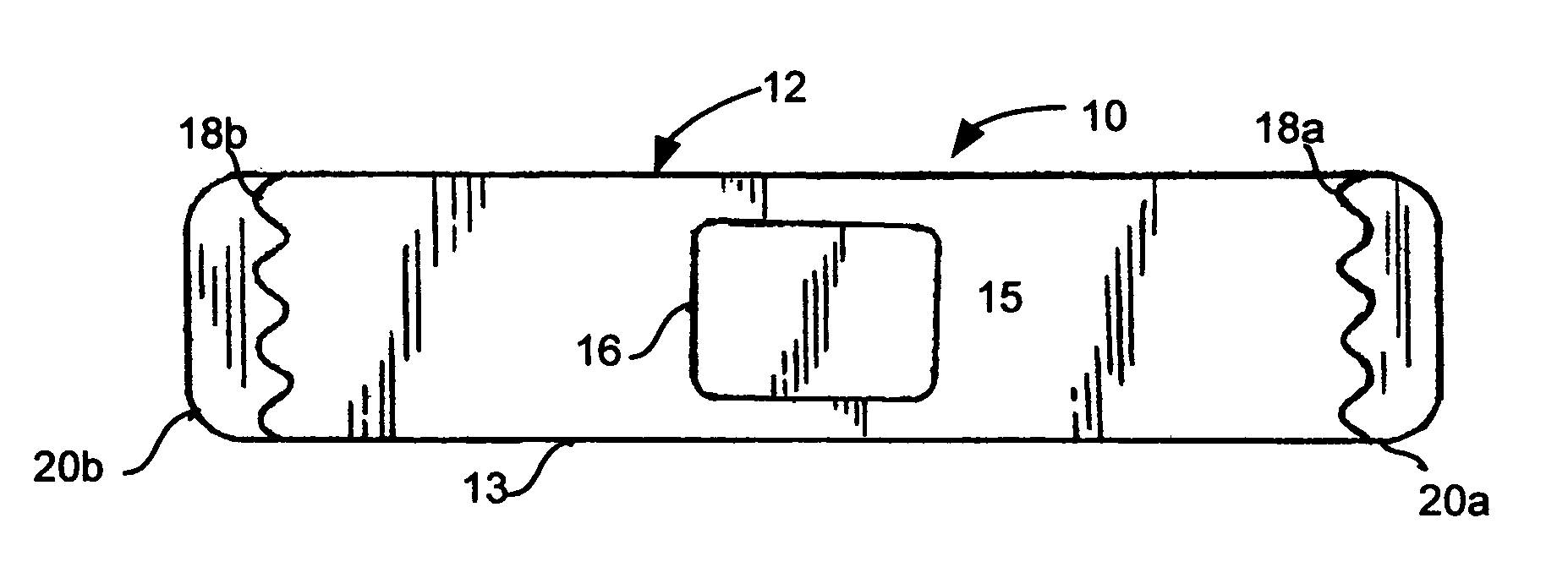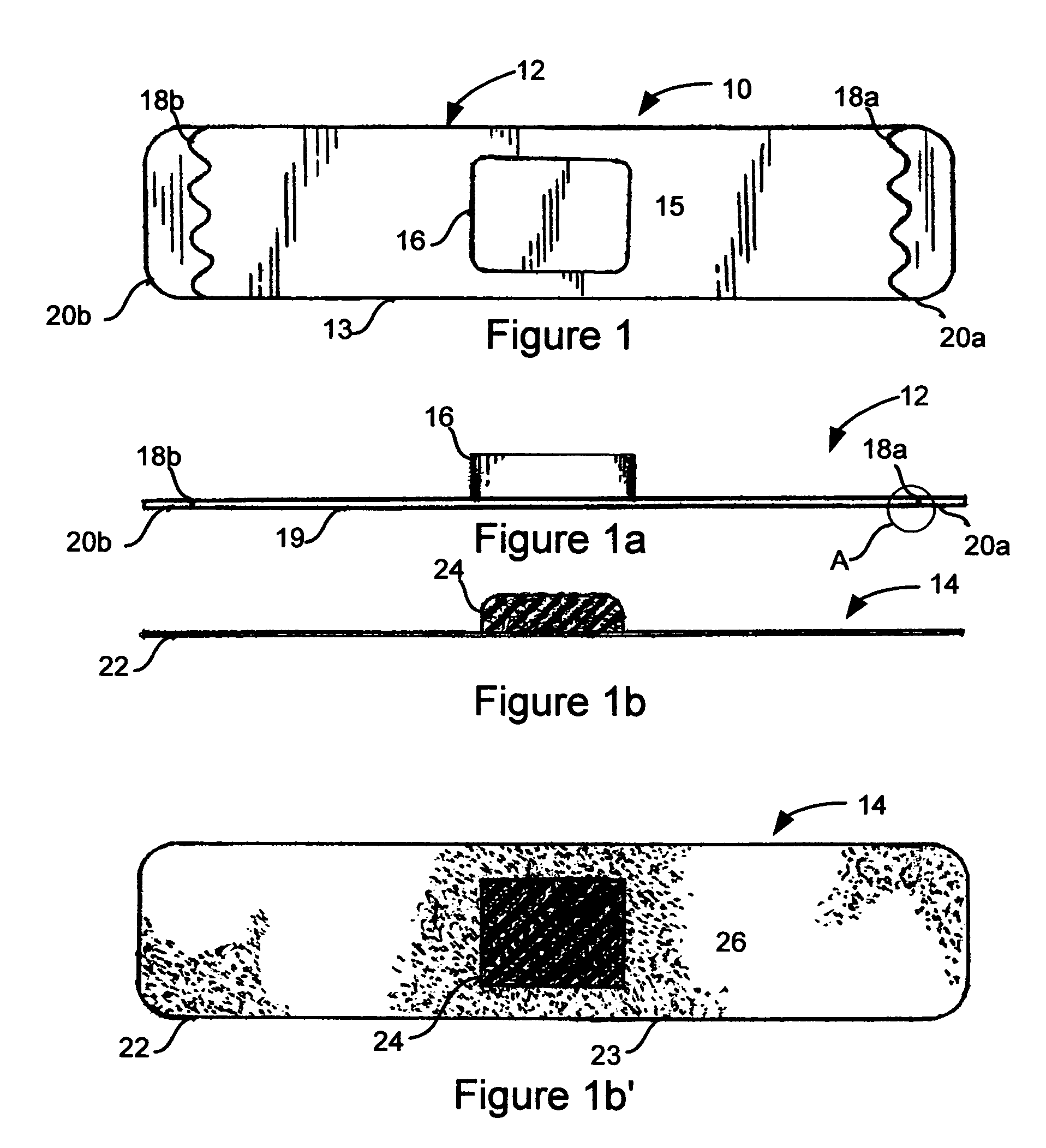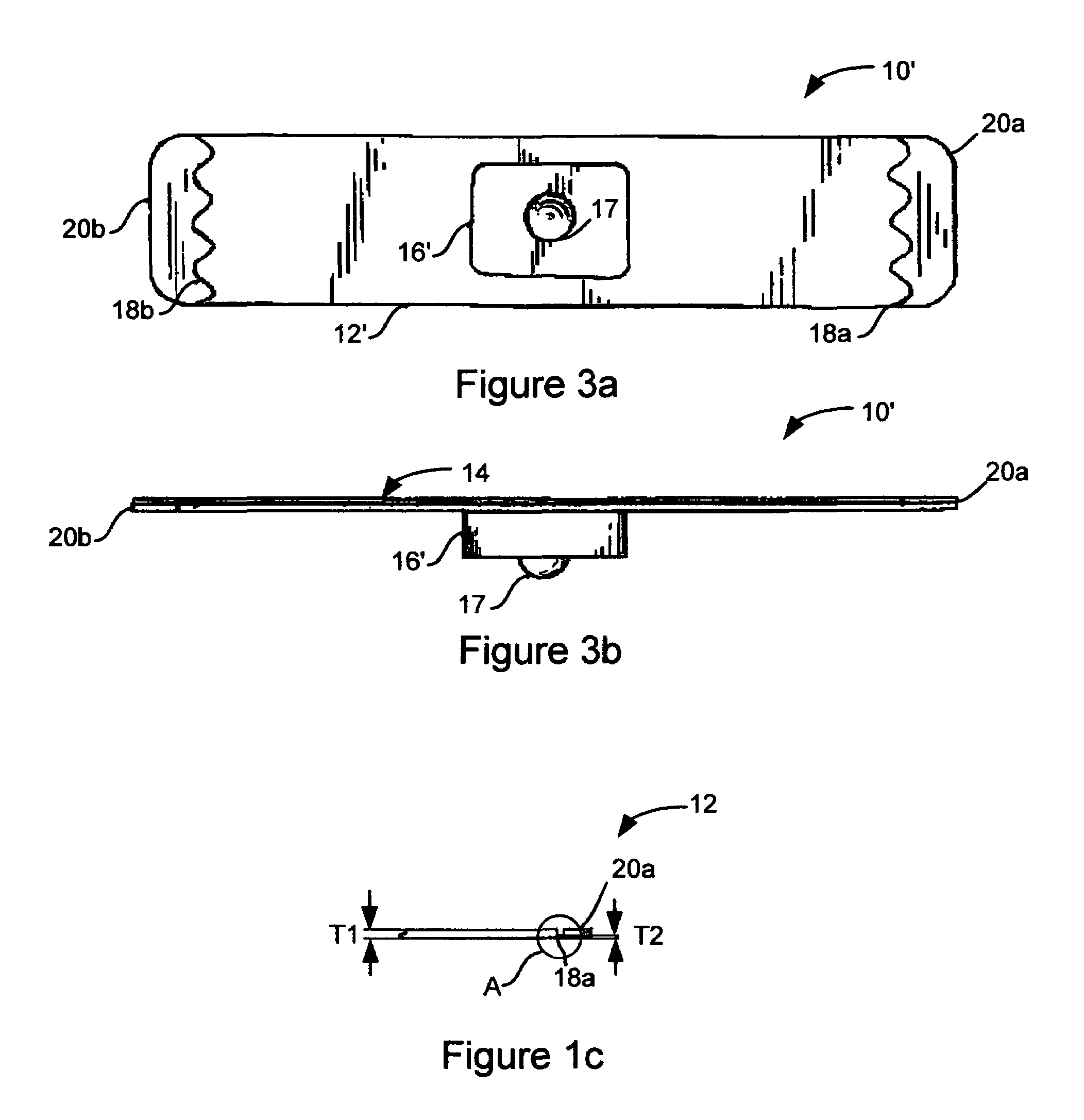Puncture wound bandage
a puncture wound and bandage technology, applied in the field of puncture wound bandage, can solve the problems of untidy disposal of gauze upon removal, discomfort and/or inconvenience of patients, and the most common dressing for puncture wound due to the use of blood withdrawal cannulas is still primitive, so as to reduce the risk of contamination, save costs, and save costs.
- Summary
- Abstract
- Description
- Claims
- Application Information
AI Technical Summary
Benefits of technology
Problems solved by technology
Method used
Image
Examples
Embodiment Construction
[0025]A first preferred embodiment of the invention will now be described with joint reference to accompanying FIGS. 1, 1a, 1b, 1b′ and 1c. As shown therein, FIG. 1 is a top plan view of a sealed bandage in accordance with one preferred embodiment of the present invention. A side elevation view of the bandage carrier shown in FIG. 1 is illustrated in FIG. 1a. FIG. 1b is a side elevation view of the bandage of FIG. 1. FIG. 1b′ is a top plan view of the bandage of FIG. 1b and FIG. 1c is a partial side elevation view of the carrier of FIG. 1a illustrating detail A.
[0026]As shown in these Figures, a sealed bandage 10 comprises a carrier 12 and a bandage 14 having an adhesive strip 22 with an adhesive surface 26 that defines an outer perimeter 23. Sealed bandage 10 is preferably about six inches long and between 1 inch and 1¼ inches wide for use as a dressing for a standard needle puncture wound. As discussed herein, the inventive bandage is preferably sized, shaped and constructed so th...
PUM
 Login to View More
Login to View More Abstract
Description
Claims
Application Information
 Login to View More
Login to View More - R&D
- Intellectual Property
- Life Sciences
- Materials
- Tech Scout
- Unparalleled Data Quality
- Higher Quality Content
- 60% Fewer Hallucinations
Browse by: Latest US Patents, China's latest patents, Technical Efficacy Thesaurus, Application Domain, Technology Topic, Popular Technical Reports.
© 2025 PatSnap. All rights reserved.Legal|Privacy policy|Modern Slavery Act Transparency Statement|Sitemap|About US| Contact US: help@patsnap.com



